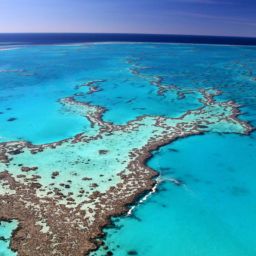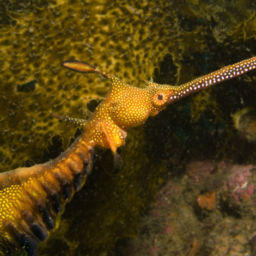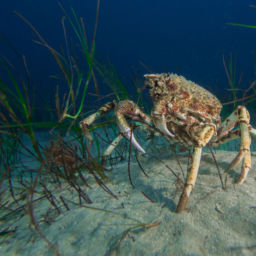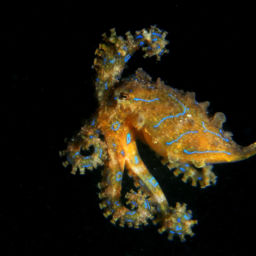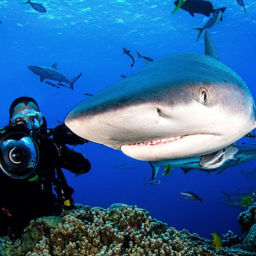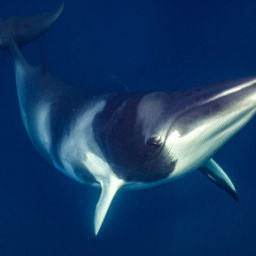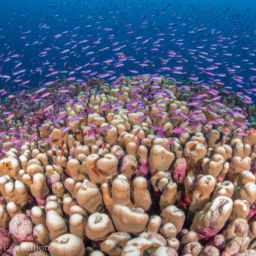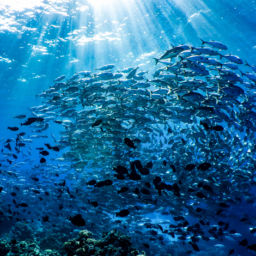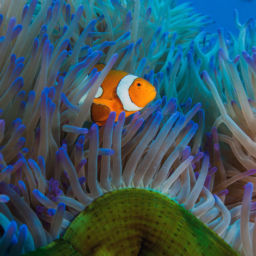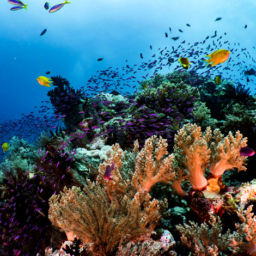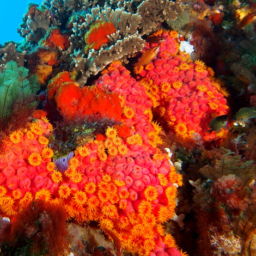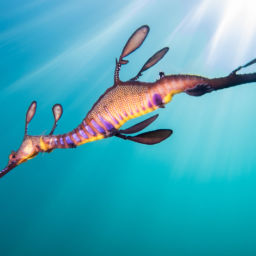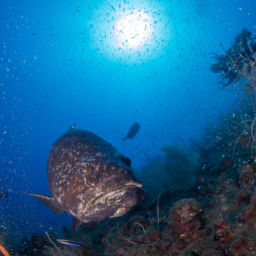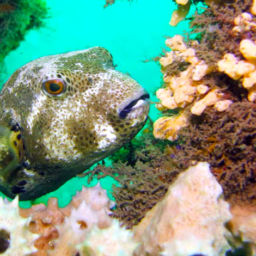Marine biologist, photographer and master reef guide Johnny Gaskell has visited over 200 reef sites in the Great Barrier Reef over the last two years and has created a bucket list of secret spots on the Great Barrier Reef for those eager to explore beyond the popular dive sites.
Famous for the discovery of Queensland’s own Blue Hole, Gaskell is on a personal mission to travel the length of the Great Barrier Reef to survey its health.
“Last year, I visited 35 reefs to conduct reef health surveys as part of the Great Reef Census, and personal dive expeditions,” he says. “On these trips, I found some amazing sites which were the inspiration to create my personal top 10 list. Obviously, the ranking is subjective, but it takes into consideration coral cover, general reef health and disturbance of the sites with a slight bias toward blue holes!”
When asked about the reef health of these sites, Johnny says all of the reefs showed some form of disturbance, such as mortality from crown-of-thorns starfish or cyclone damage.
“In all cases, it was clear that these reefs were under stress. But there were still some pretty incredible sections when it comes to coral cover and diversity of fish life,” he adds. “That’s exactly what motivates me to continue exploring. My official top 10 list might take a few more years to determine, as there are still over 2,500 reefs out there waiting to be explored. But I’m working on it.”
Sudbury Reef, Cairns (Tropical North Queensland)
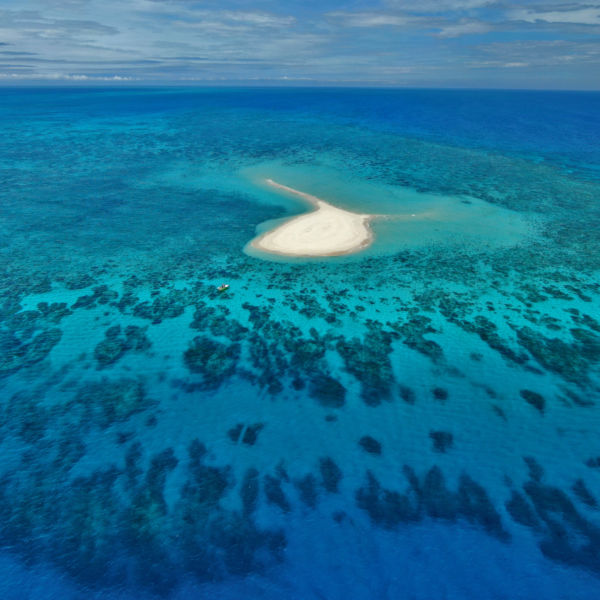 Sudbury Reef is tucked behind Fitzroy Island off the coast of Cairns in Tropical North Queensland, with a beautiful white-sand cay at its northern end. From steep drop-offs to shallow clam gardens, Sudbury Reef offers a variety of snorkel and dive spots.
Sudbury Reef is tucked behind Fitzroy Island off the coast of Cairns in Tropical North Queensland, with a beautiful white-sand cay at its northern end. From steep drop-offs to shallow clam gardens, Sudbury Reef offers a variety of snorkel and dive spots.
“This reef was different than most of the other reefs I visited last year. It was dominated by soft coral and had a very high number of parrotfish and mullet, which reminded me of the Whitsundays,” says JGaskell. “The marine life here is incredible and something you’d usually expect to see at much deeper dive sites.”
Little Baron Reef, Yeppoon (Capricorn Coast)
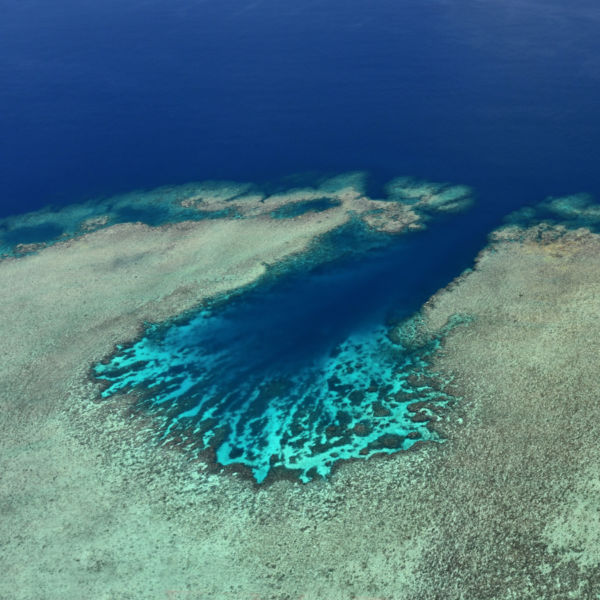 Little Baron Reef is one of over 1,000 separate coral reefs within the Swain Reefs National Park, located 125 miles, or 200 km, off the coast of Yeppoon.
Little Baron Reef is one of over 1,000 separate coral reefs within the Swain Reefs National Park, located 125 miles, or 200 km, off the coast of Yeppoon.
“The reef here was mostly hard coral and in great condition with spectacular drop-offs. We also saw a huge loggerhead turtle here, which was amazing,” Gaskell says.
In winter, it is not unusual to see humpback whales in the waters around these reefs, as the area provides a safe and calm calving ground.
Kangaroo Reef, Bowen (The Whitsundays)
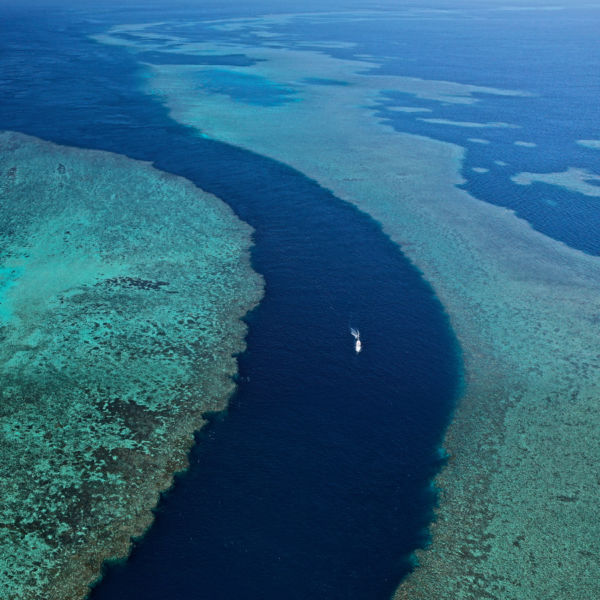 Kangaroo Reef (East) sits inside a protected green zone offshore from the small seaside town of Bowen at the top of the Whitsundays region. The reef has a channel running through its middle, creating a spectacular drop-off. Gaskell says the coral cover, vertical walls and fish life at Kangaroo Reef were incredible.
Kangaroo Reef (East) sits inside a protected green zone offshore from the small seaside town of Bowen at the top of the Whitsundays region. The reef has a channel running through its middle, creating a spectacular drop-off. Gaskell says the coral cover, vertical walls and fish life at Kangaroo Reef were incredible.
“There is a fast current running through the channel, which is great for coral growth as this keeps the surface temperatures well-mixed and cooler in summer while also delivering food in the form of plankton.”
Unnamed Reef, Yeppoon (Capricorn Coast)
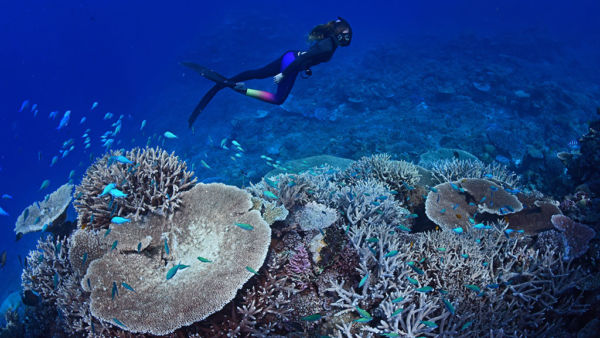 This little gem is part of the Swains Reef National Park — a large collection of small reefs, most of which are unnamed. Unnamed reefs can be located with the help of the reference maps provided by the Great Barrier Reef Marine Park Authority (GBRMPA). The GBRMPA refence for this particular reef is 21-227. It is located roughly 174 miles, or 280 km, offshore from Yeppoon.
This little gem is part of the Swains Reef National Park — a large collection of small reefs, most of which are unnamed. Unnamed reefs can be located with the help of the reference maps provided by the Great Barrier Reef Marine Park Authority (GBRMPA). The GBRMPA refence for this particular reef is 21-227. It is located roughly 174 miles, or 280 km, offshore from Yeppoon.
“This particular reef had spectacular swim-throughs, caves and coral cover that was inhabited by a high diversity of fish species and a few species of friendly sharks,” says Gaskell. “The underwater topography at this site was unbeatable with dramatic walls and gutters for deep swim-throughs.”
Fitzroy Reef, Great Keppel Island (Capricorn Coast)
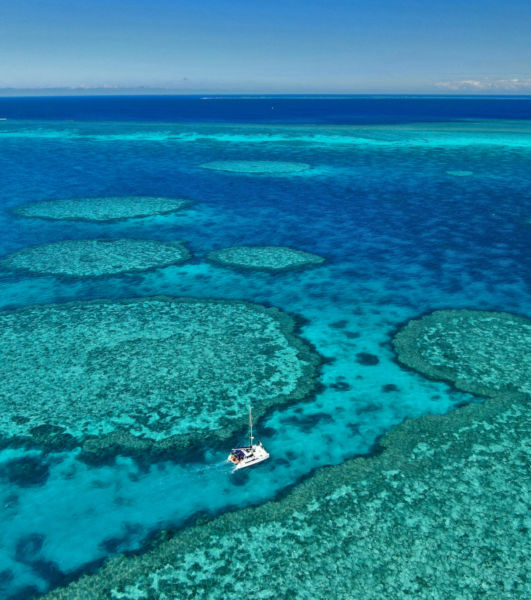 Fitzroy Reef is the largest of 22 reefs that form the Capricorn and Bunker groups in the Southern Great Barrier Reef. This site is popular with divers and snorkelers because the reef forms a ring around a large, deep lagoon that offers protection and anchorage points.
Fitzroy Reef is the largest of 22 reefs that form the Capricorn and Bunker groups in the Southern Great Barrier Reef. This site is popular with divers and snorkelers because the reef forms a ring around a large, deep lagoon that offers protection and anchorage points.
Gaskell vividly remembers this lagoon. “It was an amazing light blue color, with reefs scattered throughout. The highlight was the coral slopes near the channel entry to the lagoon. The slopes were completely covered in tightly compacted, diverse hard corals with lots of fish life, particularly parrotfish. It reminded me of some of the spectacular sites right up the top of the Great Barrier Reef, near Raine Island.”
Tiger Reef, Bowen (The Whitsundays)
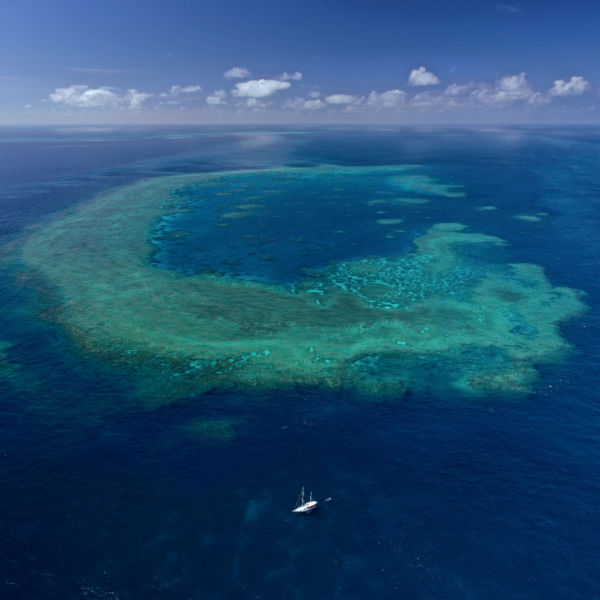 Tiger Reef is a semi-exposed reef east off the coast of Bowen in the Whitsundays, right next to Kangaroo Reef (#8).
Tiger Reef is a semi-exposed reef east off the coast of Bowen in the Whitsundays, right next to Kangaroo Reef (#8).
“We were excited to visit Tiger Reef because firstly — it’s called Tiger Reef — and secondly, it is close to the path Cyclone Debbie took in 2017, so we were very interested to see if the protected side still had coral cover,” Gaskell explains. “We were relieved to find that it was in great condition and had barely any cyclone damage.”
Briggs Reef, Cairns (Tropical North Queensland)
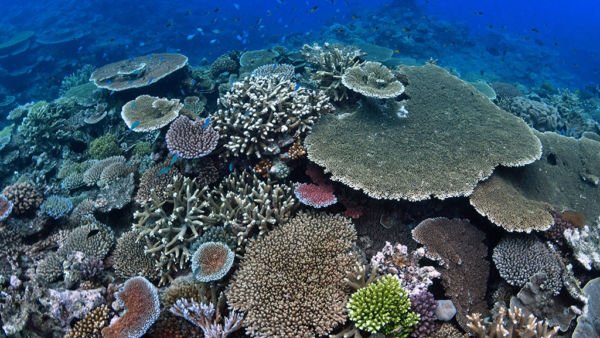 Briggs Reef is a smaller reef sitting snugly between the larger Moore and Sudbury Reefs near Fitzroy Island off the coast of Cairns.
Briggs Reef is a smaller reef sitting snugly between the larger Moore and Sudbury Reefs near Fitzroy Island off the coast of Cairns.
“I was blown away by the variety of coral on the reef walls and bommies” says Gaskell. “Compared to other sites, Briggs Reef has a very high hard coral cover and we saw a few turtles and small sharks. The site was a real surprise to me. Being so close to Cairns, it’s a great spot for novice or advanced divers,” he adds.
Secret Reef, the Whitsundays
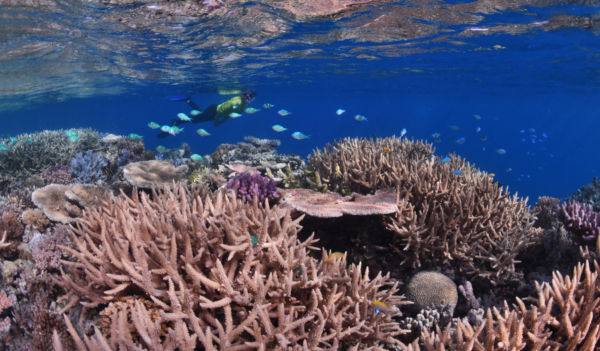 Not ready to reveal the location of this particular reef, Gaskell smirks and says, “It’s always good to keep a secret or two.”
Not ready to reveal the location of this particular reef, Gaskell smirks and says, “It’s always good to keep a secret or two.”
“It’s a spectacular system of lagoons with very high coral and fish diversity. It’s very delicate but an incredible ecosystem not too far from one of the more popular dive sites in the Whitsundays,” he hints.
Elisabeth Reef, the Whitsundays
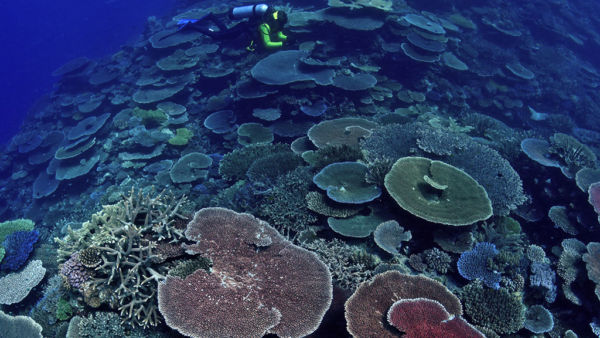 On the outer edge of the Great Barrier Reef Marine Park in the Whitsundays, approximately 68 miles, or 110 km, north of the Whitsunday Islands, sits Elisabeth Reef. Gaskell describes it as one of the most incredible coral habitats he has ever seen.
On the outer edge of the Great Barrier Reef Marine Park in the Whitsundays, approximately 68 miles, or 110 km, north of the Whitsunday Islands, sits Elisabeth Reef. Gaskell describes it as one of the most incredible coral habitats he has ever seen.
“The water here is crystal-clear, with thousands of fish zooming around the reef. This site has considerably high coral cover, particularly on the reef edge — up to 100 percent in some parts, which is outstanding and makes it one of my favorite dive sites.”
Crystal Blue Hole, Yeppoon (Capricorn Coast)
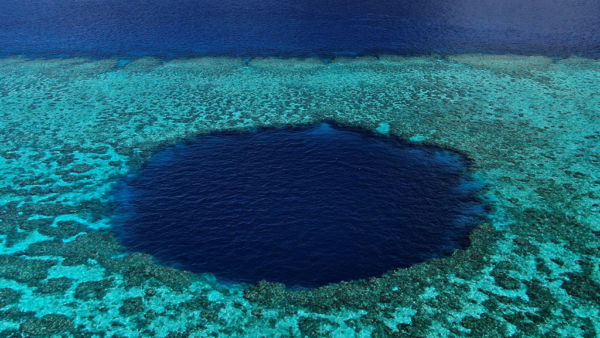 “My No. 1 reef site from my latest expeditions would have to be Crystal Blue Hole, a small reef with a perfect lagoon anchorage right next to a 148-foot, or 45-m deep blue hole,” Gaskell says. “The site is 168 miles, or 270 km, offshore from Yeppoon and part of the Swains National Park. “For me, it doesn’t get any better. Inside the hole there was coral cover all around the edge, then a steep drop down into the blue. I couldn’t even see the bottom,” Gaskell says.
“My No. 1 reef site from my latest expeditions would have to be Crystal Blue Hole, a small reef with a perfect lagoon anchorage right next to a 148-foot, or 45-m deep blue hole,” Gaskell says. “The site is 168 miles, or 270 km, offshore from Yeppoon and part of the Swains National Park. “For me, it doesn’t get any better. Inside the hole there was coral cover all around the edge, then a steep drop down into the blue. I couldn’t even see the bottom,” Gaskell says.
All images courtesy of JOHNNY GASKELL


